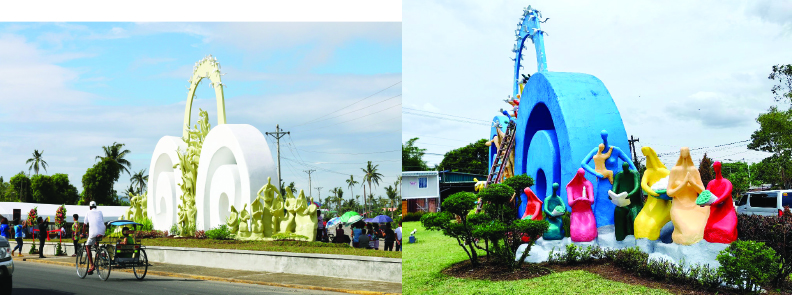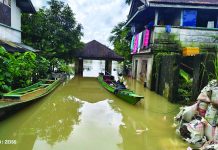In Tanauan

TACLOBAN CITY – A recent decision to repaint the “Surge of Hope” Yolanda Memorial in bright pastel colors has sparked outrage and emotional reactions online, with many calling it a “disrespectful” makeover of a site that stands atop a mass grave for victims of Super Typhoon ‘Yolanda’ (Haiyan) in Tanauan, Leyte.
The memorial, originally painted in subdued beige tones, was repainted on July 6 by the Tanauan municipal government—a move that many netizens say undermines the solemnity of a sacred site meant to honor over 300 unidentified victims buried in Barangay Calogcog.
“This looks like a children’s playground. The color, I mean,” one user commented.
“With respect to those who perished and the artist, get it back to its original form,” another wrote.
Others went as far as calling the repainting “a total disgrace.”
A viral post summed up the public sentiment: “Painting the statue in bright colors takes away its real meaning. It was built to honor the lives lost and the survivors of Typhoon Yolanda. That place is sacred and should be treated with respect.”
Critics argue the new colors make the memorial look more like a festival installation than a space for mourning and remembrance, diminishing its emotional impact on survivors and grieving families.
In response to the backlash, Eugene Ramos, head of the Tanauan General Services Office, said the repainting took seven days and was meant to “bring life” to the structure.
“Someone suggested the color change, and when I consulted others, all feedback was positive. The idea was to make the memorial look more alive—because the memory of the victims remains alive in our hearts,” Ramos explained.
He emphasized that there was no intention to turn the memorial into something festive or irreverent, adding that perceptions of color in memorial spaces can vary by culture.
“There are cemeteries with colorful tombs. Not all color takes away solemnity,” he added.
The “Surge of Hope” monument, created by Mindanaoan artist Rey Mudjahid ‘Kublai’ Millan, was unveiled in April 2015. The centerpiece features a striking sculpture of a parent cradling a child, flanked by abstract figures representing both survivors and aid workers.
Two 14-foot spiral curves, symbolizing the height of the storm surge, rise from both sides. A flock of birds and a rainbow crown the monument—symbols of hope and healing. Names of the deceased are etched on a glass panel at the base, near an artificial waterfall.
Funded by Smart Communications and Granix Distributions Inc. of Procter & Gamble, the memorial has served as both a site for reflection and a venue for annual commemorations for families who lost loved ones in the 2013 disaster that claimed 1,384 lives in Tanauan alone.
JOEY A. GABIETA, LIZBETH ANN A. ABELLA



